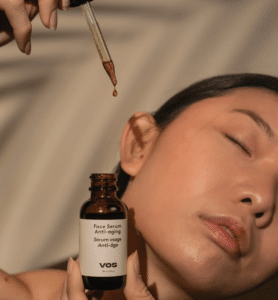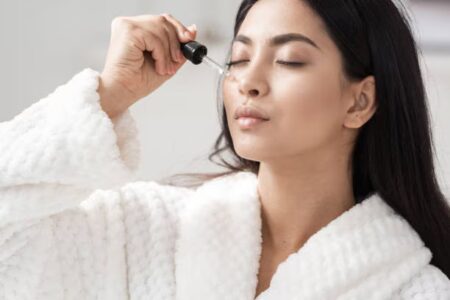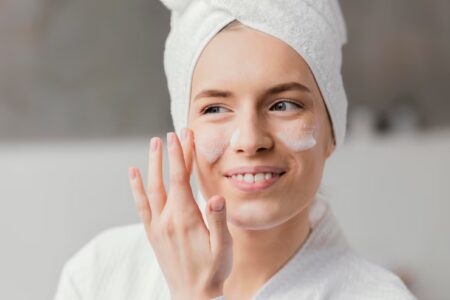Face serums are often promoted as concentrated skincare solutions that deliver visible results. They are lightweight, fast-absorbing, and packed with active ingredients to target specific concerns such as dullness, dryness, fine lines, or pigmentation. However, for some people, a new serum may trigger breakouts, leaving skin irritated instead of improved.
If you have recently added a serum to your skincare routine and noticed unwanted pimples or small bumps, the problem may not be as simple as “the serum is bad.” Several factors including ingredients, skin type, and application habits—can contribute to this reaction.
In this guide, we’ll explore why face serums may cause breakouts, how to identify the root cause, and steps you can take to prevent and resolve these issues while maintaining a healthy skincare routine.
Why Do Face Serums Sometimes Cause Breakouts?
Breakouts after introducing a new serum can happen for multiple reasons. Understanding these can help you adjust your skincare routine rather than abandoning serums altogether.
1. Skin Purging vs. Breakouts
Not all bumps after using a serum are true breakouts. Some ingredients—such as retinol, glycolic acid, or salicylic acid—speed up cell turnover. This can push trapped oil and dead skin cells to the surface faster, causing temporary flare-ups known as skin purging.
- Purging characteristics: Occurs in areas where you usually get pimples, appears within days of starting the serum, and typically subsides after 4–6 weeks.
- Breakout characteristics: Can appear in new areas, may involve redness and irritation, and won’t improve without stopping the product.
2. Comedogenic Ingredients
Some serums contain oils, silicones, or thickeners that can clog pores—especially for oily or acne-prone skin. Even beneficial oils like coconut oil can be too heavy for some complexions. Always check if the product is labeled non-comedogenic and review the ingredient list for potential pore-blockers.
3. Overuse of Active Ingredients
Serums are concentrated, so using too much or layering multiple actives can overwhelm your skin barrier. Over-exfoliation or excessive use of acids and retinoids can cause inflammation, leading to acne-like bumps.
4. Allergic or Irritant Reactions
Some people may develop irritation from certain preservatives, fragrances, or botanical extracts in serums. This irritation can cause redness, itching, and rash-like pimples.
5. Poor Application Habits
Applying a serum with unwashed hands, using expired products, or not cleansing the skin properly before application can introduce bacteria, leading to breakouts.
How to Identify If Your Serum Is the Problem
Before removing the serum from your skincare routine, assess the situation carefully.
- Track the timing: Did the breakouts start within days of using the serum?
- Check ingredients: Look for known comedogenic or irritating substances.
- Use a process of elimination: Stop other new products to isolate the cause.
- Observe breakout type and location: If pimples appear in new areas or are unusually large and inflamed, the serum may be unsuitable for your skin.

Steps to Fix Serum-Related Breakouts
If you suspect your face serum is causing breakouts, these strategies can help restore skin balance and clarity.
- Stop Using the Serum Temporarily
Pause the product and monitor your skin for improvement. If the breakouts subside, it’s a sign the serum may be the trigger.
- Simplify Your Skincare Routine
Focus on gentle cleansing, hydrating, and protecting your skin while it recovers. Avoid strong actives until your skin barrier is restored.
- Reintroduce Slowly
If you still want to use the serum, start with a lower frequency—once or twice a week—and increase gradually. This allows your skin to adapt.
- Patch Test Before Full Use
Apply a small amount of the serum behind your ear or on your jawline for several days. This can help detect irritation before applying it to your entire face.
- Switch to a Serum for Your Skin Type
For oily or acne-prone skin, opt for lightweight, water-based serums with non-comedogenic ingredients like niacinamide or hyaluronic acid. For dry skin, use nourishing but breathable formulas without heavy oils that may clog pores.
- Maintain Consistent Hydration
When skin is dehydrated, it may produce excess oil, worsening breakouts. Pair your serum with a suitable moisturizer to keep skin balanced.
Final Thought:
Face serums can be valuable tools in a skincare routine, but they must be matched carefully to your skin’s needs. By understanding the causes of serum-related breakouts and making thoughtful adjustments, you can continue to enjoy their benefits without compromising skin health.






